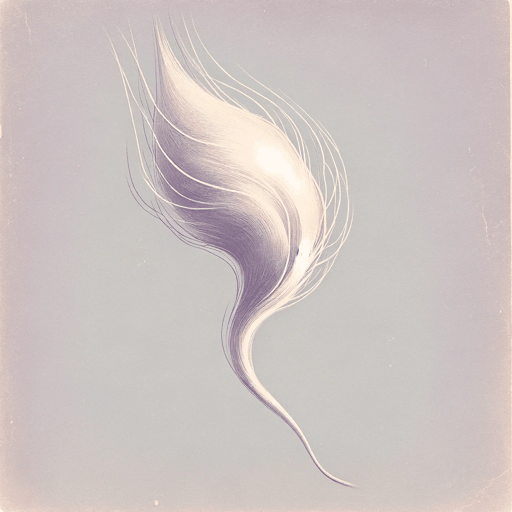17 pages • 34 minutes read
Gwendolyn BrooksThe Mother
Fiction | Poem | Adult | Published in 1945A modern alternative to SparkNotes and CliffsNotes, SuperSummary offers high-quality Study Guides with detailed chapter summaries and analysis of major themes, characters, and more.
Summary and Study Guide
Overview
One of Gwendolyn Brooks’s earliest and most well-known poems, “the mother” was originally published in her debut book of poetry, A Street Called Bronzeville (1945, Harper & Brothers). Written nearly 30 years before the Roe v. Wade decision codified abortion rights, “the mother” paints an unflinching picture of abortion and its lingering effects. This poet wrestles with lyric language, struggling to articulate the complex and often contradictory truths of her experience. Uneven lines and interrupted rhyming couplets reflect the desperation in the speaker’s voice as she reflects on her relationships with the children she never had. Brooks innovates in traditionally white literary forms to craft new windows into life as a Black woman in the United States, demonstrating a keen understanding of both her craft and her community.
Working in the wake of the Harlem Renaissance, Brooks stands out for her commitment to cataloguing the lives of ordinary people as opposed to the most exceptional figures in her community. Her work shines a spotlight on the domestic concerns and internal worlds of her speakers, giving a platform to intimate stories that might not have been shared otherwise. Brooks takes a Modernist approach to form and structure, abiding by formal constraints and abandoning them when they no longer serve her purpose. She freely intermingles African American vernacular with lyric language and striking images. Along with such poets as Nikki Giovanni and Sonia Sanchez, Brooks was a vital feminist voice in the Black Arts Movement. The broader literary establishment’s embrace of her work signaled a growing trend toward Multiculturalism, demonstrating increased interest in subjects less well represented in poetry than the white male majority.
Poet Biography
Gwendolyn Elizabeth Brooks was born on June 7, 1917 in Topeka, Kansas. Family history had it that her grandfather Lucas escaped enslavement to fight in the Union Army. The family moved North as part of the Great Migration shortly after Brooks’s birth, and she would come to consider Chicago’s South Side her home for the rest of her life. Brooks’s mother Keziah and father David nurtured her poetic talents after discovering their seven-year-old writing impressive two-line verses. An introspective child from a modest home, Brooks was shunned by her peers for her shy demeanor and dark skin. Her first poem, “Eventide,” was published in the October 1930 issue of American Childhood’ when she was 13. The precise language of these early poems demonstrates a care and commitment to her craft from an early age. Brooks kept notebooks and studied the work of such modern writers as Paul Laurence Dunbar, Countee Cullen, and Langston Hughes. When she met Hughes in 1933 and showed him a few of her poems, he praised her work and encouraged her to keep writing.
Brooks graduated from a two-year program at Wilson Junior College in 1936. She considered a four-year degree unnecessary since she had already dedicated her life to poetry. During her school days, Black pride emerged as a consistent theme in her work. Brooks praised the dark-skinned men and women who moved boldly through the world in such poems as “Song for Joe Louis,” and disdained the “bronze youths” who capitulated to white aesthetics in her poem “Negroid.” Poet Richard Wright championed Brooks’s work to his publisher, Harper and Brothers, and her first book was released in 1945. A Street Called Bronzeville was notably acclaimed by white and Black audiences alike. Brooks was praised for her nuanced, grounded portrayal of life as a Black woman and astute use of poetic form and craft.
Brooks went on to become the first African American to win a Pulitzer Prize with her second book, Annie Allen (1949, Harper & Brothers). Her lone novel, Maude Martha (1953, Harper & Brothers), follows a young Black woman’s coming of age in the Bronzeville neighborhood of Chicago. She published her autobiographies Report from Part One in 1972 and Report from Part Two in 1995. She taught at colleges and universities throughout the United States and spent the later part of her life mentoring young Black poets. A much-lauded figure in 20th-century American poetry, Brooks’s awards and honors include but aren’t limited to: multiple Guggenheim Fellowships; medals from the Poetry Society of America and the National Book Foundation; inductions into the American Academy of Arts and Letters and the National Women’s Hall of Fame; and a term as the 1985-1986 Poet Laureate of the United States. She died in Chicago on December 3, 2000 at the age of 83.
Poem Text
Brooks, Gwendolyn. “the mother.” 1945. Poetry Foundation.
Summary
“the mother” is a three-stanza unmetered poem of 33 lines comprised largely of perfect rhymes. The poem wastes no time getting to the sensitive topic at hand, cutting straight to the chase: “Abortions will not let you forget” (Line 1). Using second person, the speaker conjures imagined details about the children “you got that you did not get” (Line 2), such as touching wet newborn heads with or without hair, bribing small children to behave with candy, and comforting them when they’re afraid. The speaker employs a playful style, showing affection with a metaphorical “gobbling mother-eye” (Line 10) and working exclusively in rhymed couplets.
The second stanza is the longest by far at 20 lines. It opens with a shift to first person and a swift change in tone as the speaker recalls hearing the voices of her aborted children on the wind. Addressing them directly as “Sweets” (Line 13), the speaker presents an answer to a hypothetical question. If she did in fact rob these children of the lives they could have had, the births, marriages, and deaths, then they should know that was never her intention: “even in my deliberateness I was not deliberate” (Line 21). This break in the rhyme scheme and moment of naked sincerity is doubled-back on in the next line when the speaker doubts the truth of this statement and the accuracy of her subsequent words. She debates whether or not she can attempt to share the blame for her deed, whether her children are “dead. / Or rather, or instead, / You were never made” (Lines 14-16). Words fail her again, and so she settles on the assertion that the children were indeed born and died, although they never performed any actions associated with living a life (“giggled or planned or cried” [Line 30]).
The short, three-line third stanza asks the children to “believe” the speaker when she says she “loved you all” (Line 31). She clarifies, or perhaps qualifies, knowing and loving these children as she repeats her assertion one more time, breaking the last word off on its own last line: “All” (Line 33).
Related Titles
By Gwendolyn Brooks

A Bronzeville Mother Loiters in Mississippi. Meanwhile, a Mississippi Mother Burns Bacon
Gwendolyn Brooks

A Sunset of the City
Gwendolyn Brooks

Boy Breaking Glass
Gwendolyn Brooks

Cynthia in the Snow
Gwendolyn Brooks

Maud Martha
Gwendolyn Brooks

my dreams, my works, must wait till after hell
Gwendolyn Brooks

Speech to the Young: Speech to the Progress-Toward (Among them Nora and Henry III)
Gwendolyn Brooks

The Ballad of Rudolph Reed
Gwendolyn Brooks

The birth in a narrow room
Gwendolyn Brooks

The Blackstone Rangers
Gwendolyn Brooks

The Chicago Defender Sends a Man to Little Rock
Gwendolyn Brooks

The Crazy Woman
Gwendolyn Brooks

The Lovers of the Poor
Gwendolyn Brooks

the rites for Cousin Vit
Gwendolyn Brooks

To Be in Love
Gwendolyn Brooks

To The Diaspora
Gwendolyn Brooks

Ulysses
Gwendolyn Brooks

We Real Cool
Gwendolyn Brooks

